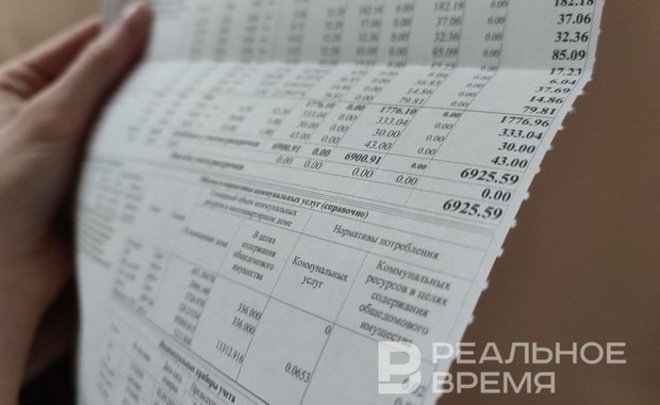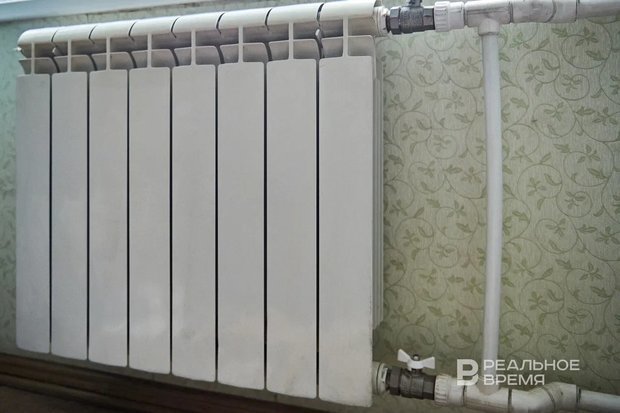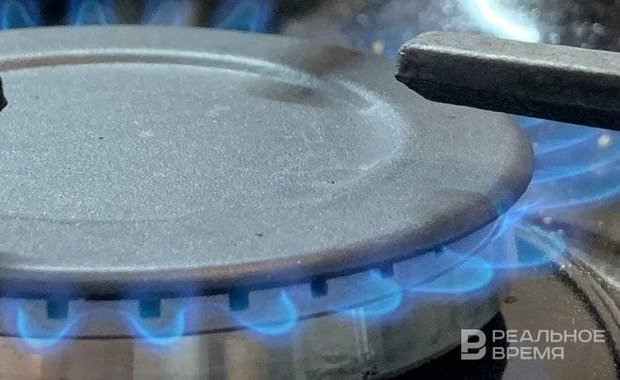Tatarstan may cross ‘red lines’ of tariff growth of utilities
The federal government has allowed the republic to increase the cost of utilities by an amount from 10,8% to 15,7% — this is more than the national average

Tatarstan is again ahead of the Volga Region regions in terms of growth rates of utility tariffs. Next year, the cost of utilities in cities may rise by 15,7% — such maximum “ceiling” for tariff increases is set for Tatarstan with a base index of 10,8%. Nizhny Novgorod, Samara, and Kirov regions were able to keep within a more modest growth range — from 9,8% to 10,8%. “It is unlikely that the final fee in Tatarstan will increase by 30%," says HSE expert Artem Koval. “The authorities are taking a balanced approach to the current situation in housing and communal services, focusing on the actual inflation of 15%," he explained to Realnoe Vremya the logic of the decisions made.
At an exorbitant level
Last week, the government of the Russian Federation approved marginal indices of growth of utility bills for 2024 for each region. The decree was signed by Prime Minister Mikhail Mishustin. The document is published on the official portal of legal information.
According to it, a set of utilities (water, heat, electricity) will rise in price by an average of 9,8%. This growth index is set in the country based on the forecast of the Ministry of Economic Development of the Russian Federation. It corresponds to almost 80 subjects of the Russian Federation, starting with Khakassia (the base growth index is 4%, the maximum is 6%), almost all regions of the Volga region (from 7,8% to 9,8%) and ending with Karelia (10,5% and 15,4%). The new tariffs will be effective from July 1, 2024. That is, in the first half of the year, the payment for utilities will remain the same, and from the second half of the year it will rise within the regional indices.

Tatarstan got into the top ten regions-“leaders” where the price increase will be much more than 9,8%. For it, the maximum growth index is set at 10,8%, and the maximum allowable is 15,7%, follows from the decree of the government of Russia. This means that individual tariffs can be indexed by 15,7%, but not less than by 10,8%. Ingushetia and Dagestan were also allowed to “step wider” — the latter will have the opportunity to raise tariffs by 21% at once, which is completely higher than the current inflation rate. In total, 13 regions turned out to be behind the “red line”. In the Volga region, the lowest tariff growth is expected in Orenburg Oblast: the base index is 7,8%, the maximum is 9%. Nizhny Novgorod Oblast, Samara Oblast, and Kirov Oblast were able to keep within a more modest growth range — from 9,8% to 10,8%.
Tatarstan has never experienced such a giant leap in the cost of utilities. The last time tariffs were raised from July 1, 2022, the marginal index jumped 1,5 times for the first time and amounted to 6,2%. Then it was the highest indicator of the rise in the price for utilities. It is higher only in Chechnya, where the indexation is set at 6,5%. Then the “bill” of Kazan citizens became heavier by about 1 thousand rubles, or 10-15%. It's scary to guess what the final payment amount will be after the July indexation. If now the average payment for utilities in a two-room apartment of 50-60 square metres is 7-8 thousand rubles (excluding heating), then by next summer it will grow to 10 thousand rubles, experts say.
Gas accelerates tariffs in utilities?
“We found ourselves in the group of regions with the highest growth rate, because we have a fairly large development of the municipal sphere," First Deputy Minister of Construction, Architecture, and Housing and Communal Services Alexey Frolov explained to Realnoe Vremya.
According to him, the companies of the republic have large investment programmes for the modernisation of municipal infrastructure, and the enterprises themselves take serious obligations (that is, they took “expensive” loans). However, he did not name which specific objects forced the index to rise from 10,8% to 15,7%. Another growth factor was the increase in gas and electricity prices, he noted. The Federal Antimonopoly Service has increased Gazprom's wholesale gas prices by 8% since July 2024 and by another 8% since July 2025. This applies to both the population and businesses. But on the other hand, gas tariffs have affected everyone, and only 13 regions have exceeded the average index.
In general, in the last two or three years, the utility bill in Kazan has been constantly growing. By the end of 2022, the monthly payment of households in Kazan increased to 7,4 thousand rubles, or 8,1% of income, follows from the data of IPEM Institute. But then Kazan “missed” Perm (8,2 thousand rubles), Samara (7,9 thousand rubles) and Nizhny Novgorod (7,4 thousand rubles). It turns out that after the summer indexation of tariffs, Kazan will overtake them.

However, the tariff campaign for 2024 has not ended yet, so it is premature to “panic," Frolov said. “It's too early to say how much the average utility bill is going to rise. We need to wait for the approval of tariffs for 2024," he reassures. In his opinion, it is not yet a fact that tariffs will be indexed by 10,8%. “Perhaps, there will be changes for some specific services, and for some, there will be a slight increase. I know that the State Committee is working on tariffs and looking at what optimal decisions can be made so that both development and social burden are not heavy for the population," he assured.
Who drives the indexes up
Why are indexes growing? Marginal indices of growth of payments for utilities remain the cornerstone of the system of tariff regulation of the utility complex. They are formed on the basis of investment programmes of monopolies and their operational activities. The larger the scale of the investment programme, the more billions they want to push into the tariff for the population. According to Alexey Frolov, Tatenergo, Tattransgaz, Vodokanal Municipal Unitary Enterprise of Kazan, and Grid Company have the biggest “investments”. “Some of the events are transitioning, some have launched new investment projects," he explained. He did not name the total amount of future expenses, but last year the load on the tariff was estimated from 20 to 30 billion rubles.
An interesting point. If earlier indexes were applied to each tariff separately, then in recent years — to the entire set of services. Therefore, utility providers are forced to fight for the inclusion of their programme, sometimes to the detriment of others. According to officials, sometimes you have to choose: what is more important — to drink clean water or live in a warm apartment. It's akin to who is stronger: a whale or an elephant. In these cases, the authorities follow the simplest path and index tariffs for both water and heat. Another thing is that reports on the execution of investment programmes are not published in open sources. Therefore, distrust of them persists. And what if the money of the population goes not to repair networks, but to banal wage increases in energy companies?

How long will utility rates rise? “Is there any understanding when Tatarstan will be able to start lowering the marginal index? Is it impossible to stay at the peak of tariff growth?" Realnoe Vremya asked the first deputy minister of construction, architecture and housing, Alexey Frolov.
“It is difficult to comment, everything depends on the scenario conditions of economic development in the country," he answered laconically.
Growth limiter didn't work?
It turns out that the tool of growth limiter of fees for utilities loses its power if the marginal indices go away from the rest of the regions?

However, according to the Central Bank's forecast, annual inflation in 2023 will be in the range of 7 to 7,5%. In 2024, the regulator expects a decrease in annual values to 4-4,5% and their preservation at the level of 4%.
“In my opinion, the Tatarstan authorities have taken a balanced and objective approach to the current situation in order to ensure the renovation and reliability of the provision of services. They chose the optimal index when they applied to the federal authorities for approval. This increase in fees will ensure reliable work of suppliers, and residents will receive high-quality utilities," Koval is sure. “Of course, it is possible to restrain tariffs, as the Volga regions do, and then complain that 'everything is falling apart'.
At the same time, he admits that the actual increase in fees will be less than the limit values: “When approving tariffs, the heads of regions begin to play the game of who will not get to the limit values more strongly, and then flaunt their achievements.”